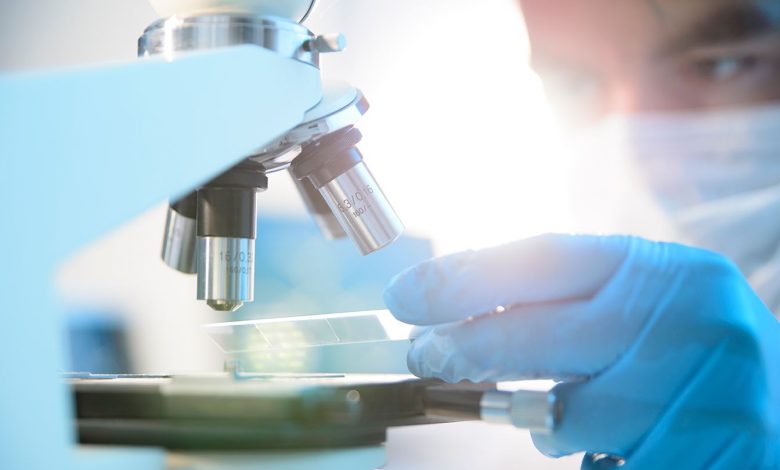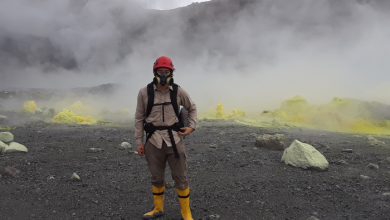Ocean science and research must advance to save oceans

Because a healthy ocean conditions the planetary balance and, for this reason, the well-being and health of women and men, the role of ocean sciences has never been more important in understanding the current degradation of the largest global ecosystem and imagine solutions.
On the occasion of the One Ocean Summit, which is being held in Brest from February 9 to 11, 2022, scientists, public and private actors and heads of government will share diagnoses and remedies to improve the condition of the “patient”. Invited to the discussion table, Ifremer discusses various promising research avenues.
If it is baptized Earth, this name is ultimately not very consistent with the reality of a planet where the liquid element predominates. The dry land hardly occupies a little less than 30% of the surface of the globe while the ocean covers the remaining 70%.
The largest ecosystem in the world, the ocean remains a great unknown despite everything: a pond incognitum. The abyss alone is said to be home to up to a million species not listed by scientists…
That is to say the need for science to lift the veil on this still so mysterious universe, but whose importance for the good health of the planet like that of living beings is no longer a mystery.
The ocean is the main source of protein for three billion people and generates 50% of the oxygen we breathe. Not to mention energy resources and the development of molecules from biodiversity (new drugs, for example).
But its interest is not limited to providing resources, it is also an essential link in the smooth running of the planet as the main regulator of the climate. A valuable function at a time when global warming is accelerating.
But it is at the cost of serious consequences on the health of the ocean, with a manifestation of lasting worrying symptoms: warming of the temperature of the waters, including at depth, and acidification of the environment, deoxygenation, rise in sea level Overstretched, the ocean “pump” seizes up… Combined with the impacts of overfishing, pollution, and the destruction of habitats, these evils lead to an erosion of marine biodiversity, threatened even before being fully inventoried.
To preserve the marine blue face of our planet, research in ocean sciences must therefore tackle four priority challenges: the sustainable management of resources, the preservation of biodiversity, the fight against pollution and climate change.
The quantity of seafood consumed in the world has already increased fivefold since the 1960s, as much due to the increase in the world’s population as that of individual consumption. About half comes from wild marine catches, which illustrates the importance of fishing in global and European diets. And FAO and OECD projections predict even greater pressure from the demand for fish in the future.
The data produced by scientific research are essential to inform fisheries management policies. Even if the objectives set, particularly in Europe within the framework of the common fisheries policy, are still far from being achieved, significant progress has been made.
In its 2020 report on the state of fish caught in France, Ifremer indicates that 60% of French landings come from sustainably exploited populations compared to only 15% twenty years ago. However, the situation in the Mediterranean, marked by chronic overfishing, remains worrying.
In an attempt to reverse the trend, Europe introduced a first-ever multiannual management plan in January 2020, with scientists contributing to the analysis of different scenarios for its implementation.
Similarly, scientific work is underway to produce knowledge and opinions on the fish stocks exploited by the fleets of the West Indies, Guyana, Reunion and Mayotte, with a view to improving resource management systems.
Several examples in recent history show that such emergency plans have been able to raise the bar: hake from the Bay of Biscay and the Celtic Sea or bluefin tuna from the Mediterranean and the Atlantic, whose populations have increased sharply in recent years, provide beautiful illustrations.
Innovation is also one of the keys to more sustainable fishing: if human beings have deployed treasures of ingenuity for centuries to fish more, now is the time to fish better. This requires increased selectivity of fishing gear and a reduction their impact on the marine environment.
A promising avenue explores, for example, “deep learning” technologies to make nets “intelligent”. The principle: to combine the use of video with artificial intelligence so that the net opens or closes automatically to target only the desired species.
On the marine biodiversity protection front, scientific innovation can also support the implementation of policies aimed at the preservation of sensitive species and habitats.
This innovation takes the form, for example, of the installation of observatories which make it possible to better understand ecosystems and monitor their evolution. For ten years, the Emso Açores Deep Sea Observatory has continuously monitored a hydrothermal field. Each year, it contributes to a better understanding of the abyssal environment and its species, which are still largely unknown.
Very recently, a new observatory has just been installed in an underwater canyon off the coast of Brittany. Its role is to study cold-water corals threatened by human activities.
Researchers are also involved in the reintroduction of some declining populations. A project to restore the flat oyster, a species threatened with extinction, has in particular made it possible to help young larvae to colonize submerged artificial supports in the harbor of Brest and in the bay of Quiberon.
Scientists have shown the ideal environmental conditions for the species: water at 18°C, sufficient salinity, and rough supports for the clinging of the bivalve. These results will support the management measures necessary for the return of the flat oyster.
Another example, in the harbor of Toulon: a team of researchers designed and installed artificial concrete reefs surmounted by seagrass beds, which are also artificial. The goal is to provide refuge areas for small fish that can grow sheltered from predators and then strengthen natural populations.
Work, carried out as part of a partnership with the French Development Agency, is also underway to develop tools to effectively restore coral reefs threatened by bleaching episodes in the Pacific Ocean.
Between land and sea, the border is not tight, to the point that 80% of the pollution of the seas has a terrestrial origin and flows via the rivers and the coastal strip. Nevertheless, thanks to strong public actions, particularly on sanitation, this pollution can be reduced, as we have seen in France with an improvement in the quality of the marine environment proven over the past thirty years.
The latest results of coastal monitoring thus show an improvement on several fronts: chemical contamination, microbiological contamination, proliferation of microalgae and eutrophication. However, points of vigilance persist on certain areas of the coast as well as in overseas territories, faced with specific problems (chlordecone, sargassum, ciguatera).
Plastic pollution is the subject of particular attention. A recent study establishes that 8 to 18 million tonnes of plastic waste arrive at sea each year. Non-biodegradable, this waste breaks up into microplastics, less than 5 mm in size. Scientists estimate the quantity of these fragments present in the ocean at 24,400 billion, ie five times more than previously thought!
The consequences for fauna and flora are far from being anecdotal. Microplastics serve as a Trojan horse for an entire microscopic ecosystem of bacteria, viruses, microalgae or micropredators that “embark” on plastics like so many life rafts. Some invasive species also use this new means of movement to conquer additional territories.
Another pitfall caused by this “invasion”: filter-feeding organisms confuse plastic microparticles and nanoparticles with plankton and ingest them. An experiment on the cupped oyster Crassostrea gigas revealed that exposure of molluscs in the laboratory to polystyrene microparticles and nanoparticles affects their reproduction.
The pollution of the ocean is not the only fact of microplastics and this still remains largely unknown. Also, better understanding the nature of this pollution and its effects on biodiversity is one of the seven axes of the “Ocean and Climate” research program, piloted jointly by Ifremer and the CNRS.
For a long time, the ocean was ignored as a key factor in the climate equation due to a lack of knowledge about the functioning of the marine environment. Since its inception in the 2000s, the international Argo program has helped make the secrets of the ocean less impenetrable through a network of more than 4,000 floats loaded with
monitor the ocean in near real time. Data that has allowed marine science to take a giant step forward.
As researchers put the pieces of the puzzle together, we discover that the ocean acts as a buffer against the effects of climate change: since the beginning of the industrial era, it has absorbed 93% of the excess heat generated by human activities and 30% to 40% of the CO₂ present in the atmosphere!
A “generosity” which is not without consequence: the ocean recorded a new heat record in 2021 which reinforces a series of worrying signals for its health and that of its “inhabitants”: continued rise in the level of the sea, decrease in dissolved oxygen in the water, acidification of the ocean, thermal stress for certain marine species; but also an intensification of extreme weather events to which the overseas territories are particularly vulnerable.
Oysters and mussels, for example, can suffer, like corals, from the decrease in the concentration of calcium carbonate, a chemical element essential to the construction of their shell. The researchers were able to demonstrate that molluscs, placed in more acidic conditions, have a thinner and lighter shell, suggesting less resistance to predation and shocks (waves or shellfish handling).
For the first time, a scientific project is also endeavoring to study the combined effects of global warming and acidification on several generations of bivalves from northern Brittany to the Mediterranean.
Although recent, the international community’s awareness of the primary role of the ocean in climate and biodiversity issues is real today. The rise in power of ocean sciences is asserting itself as a necessity to preserve an ecosystem in the process of degradation.
Sign of this new dynamic: the development of marine protected areas, the creation of governance structures such as IPBES or the UN Intergovernmental Conference on Marine Biodiversity in the High Seas (outside national jurisdictions). This is also evidenced by the publication of a special IPCC report devoted to the oceans and the cryosphere, or the continuous increase in the number of scientific publications relating to this field.
The United Nations Decade of Ocean Science for Sustainable Development, proclaimed by the UN in 2021, is another important milestone to unite the international scientific community, governments and civil society around the search for transformative change. for the conservation and sustainable use of the seas.
Oysters and mussels, for example, can suffer, like corals, from the decrease in the concentration of calcium carbonate, a chemical element essential to the construction of their shell. The researchers were able to demonstrate that molluscs, placed in more acidic conditions, have a thinner and lighter shell, suggesting less resistance to predation and shocks (waves or shellfish handling).
For the first time, a scientific project is also endeavoring to study the combined effects of global warming and acidification on several generations of bivalves from northern Brittany to the Mediterranean.
Although recent, the international community’s awareness of the primary role of the ocean in climate and biodiversity issues is real today. The rise in power of ocean sciences is asserting itself as a necessity to preserve an ecosystem in the process of degradation.
Sign of this new dynamic: the development of marine protected areas, the creation of governance structures such as IPBES or the UN Intergovernmental Conference on Marine Biodiversity in the High Seas (outside national jurisdictions). This is also evidenced by the publication of a special IPCC report devoted to the oceans and the cryosphere, or the continuous increase in the number of scientific publications relating to this field.
The United Nations Decade of Ocean Science for Sustainable Development, proclaimed by the UN in 2021, is another important milestone to unite the international scientific community, governments and civil society around the search for transformative change. for the conservation and sustainable use of the seas.
In October 2021, the One Ocean Science international campaign pursued this same goal by bringing together scientists from 37 research organizations and 33 countries to echo the essential role that ocean science must play in better understanding and protecting the environment. ocean.
It is this same wake that the One Ocean Summit to be held in Brest this week is forging, in the presence of scientists who are experts in these issues and Heads of State, with a common ambition: that the ocean is no longer just a source of global concern, but also an open door to new solutions.


